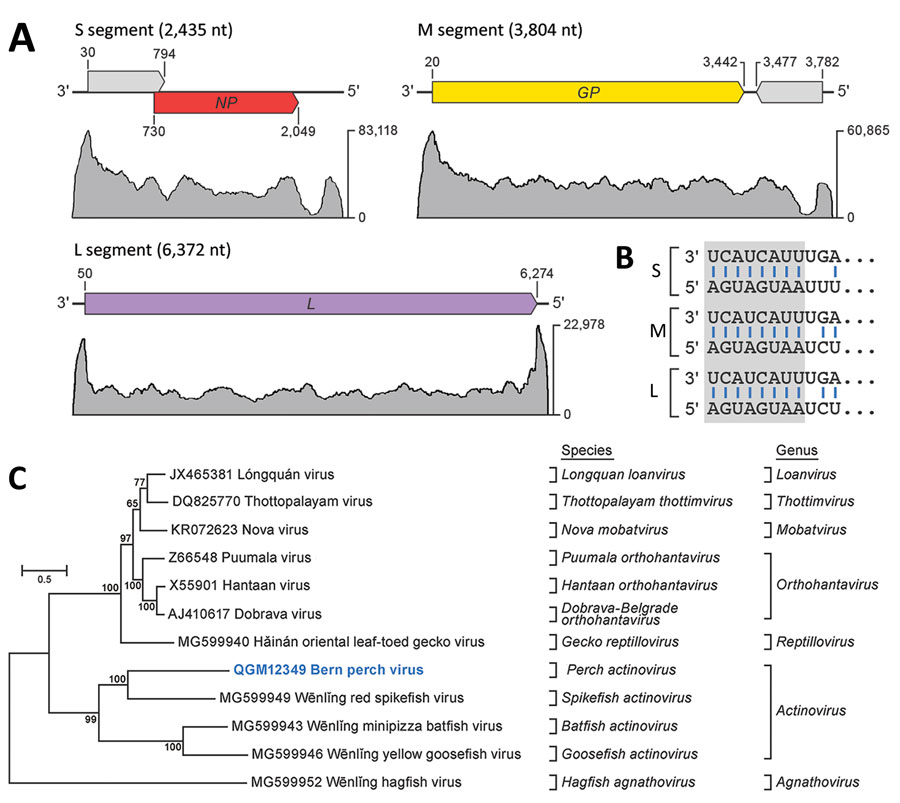Volume 27, Number 12—December 2021
Research
Novel Filoviruses, Hantavirus, and Rhabdovirus in Freshwater Fish, Switzerland, 2017
Figure 3

Figure 3. Identifying a novel hantavirus in European perch. A) Schematic representation of the 3 genome segments of Bern perch virus; open reading frames are indicated as colored arrows. Coverage plots of high-throughput sequencing reads are shown for each segment, and maximum-read coverages are indicated on the right. B) Alignment of the terminal sequences (11 nt) of the 3 segments. The terminal 8 nucleotides (gray box) are complementary within and conserved among segments. C) Maximum-likelihood phylogenetic tree of the Bern perch virus RNA-directed RNA-polymerase amino-acid sequence (bold blue) with RNA-directed RNA-polymerase amino-acid sequences of representative members of the family Hantaviridae. Numbers near nodes on the trees indicate bootstrap values. Branches are labeled by GenBank accession number, and virus name. Scale bar indicates number of substitutions per site, reflected by branch lengths. GP, glycoprotein gene; L, large; M, medium; S, small; NP, nucleocapsid protein gene.
1These authors contributed equally to this article.